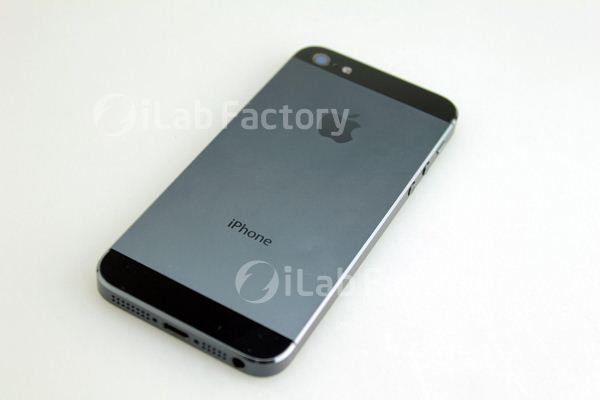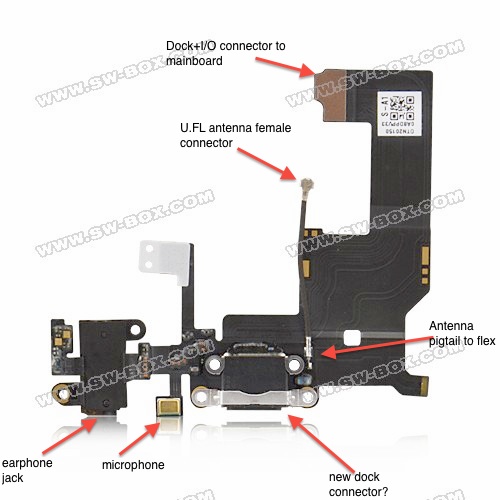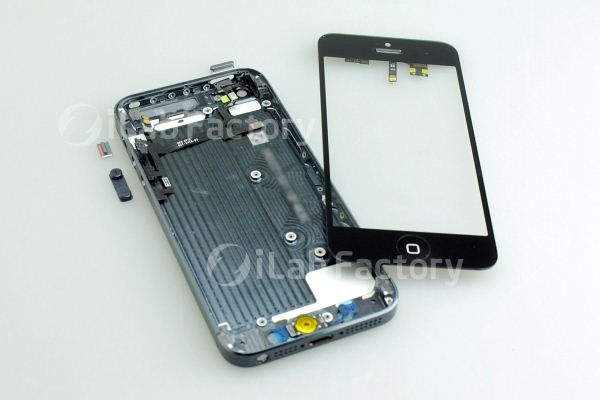Preparing for the iPhone Next: Rumors Analyzed
by Brian Klug & Anand Lal Shimpi on August 27, 2012 9:40 PM EST- Posted in
- Smartphones
- Apple
- Mobile
- iPhone
While we typically don't comment on rumors we don't know to be true at AnandTech, we often get requests to help set rational expectations ahead of major iDevice launches. The shroud of secrecy around major Apple launches can pave the way for both sensible and unrealistic conclusions.
Given the growth of Apple's iPhone/iPad devices, it has become increasingly difficult for suppliers in the chain to remain mum about any changes. Similar to how we often get early access to CPUs, motherboards and other components out of Taiwan, it has become increasingly commonplace to see leaks of iDevice components out of the big ODMs in China.
Apple is largely expected to launch its sixth iPhone next month. The historical cadence of design, SoC, and cellular changes are in the table below:
| Apple iPhone - Historical Trends | |||||||
| Release Year | Industrial Design | CPU Architecture | GPU Architecture | Cellular Architecture | |||
| iPhone | 2007 | 1st gen | ARM11 | MBX-lite | Infineon S-Gold 2 | ||
| iPhone 3G | 2008 | 2nd gen | ARM11 | MBX-lite | Infineon X-Gold 608 | ||
| iPhone 3GS | 2009 | 2nd gen | Cortex A8 | SGX-535 | Infineon X-Gold 608 | ||
| iPhone 4 | 2010 | 3rd gen | Cortex A8 | SGX-535 | Infineon X-Gold 618 in 4 GSM / Qualcomm MDM6600 in 4 CDMA | ||
| iPhone 4S | 2011 | 3rd gen | 2 x Cortex A9 | SGX-543MP2 | Qualcomm MDM6610 (MDM6600 w/ ext. trans) | ||
| iPhone Next | 2012 | ? | ? | ? | ? | ||
Trends are pretty easy to spot in the table. With the exception of the first iPhone, the industrial design appears to be on a 2-year cadence. The CPU and GPU architectures are also on the same 2-year cadence. From a silicon standpoint even the cellular architecture is trending towards the same 2-year cadence, with a few notable exceptions (e.g. GSM/CDMA iPhone 4 divide).
Based on historical trends alone it's pretty easy to conclude that we'll see a 4th generation chassis, a pair of ARM Cortex A9s and a PowerVR SGX 543MP2 under the hood. Add the assumption of LTE (a reasonable one to make) and you have a pretty believable story. It turns out the currently available evidence helps corroborate this, but let's dig through what's out there to see how this all fits.
Chassis & Display
The chassis is largely a known quantity by this point. Enough examples out of China have surfaced to support the current working theory of a 4-inch diagonal (16:9) display in a slightly taller chassis with roughly the same width. Put simply, it's a new taller aspect ratio, which also has the consequence of including a larger 4-inch, 640 x 1136 display. The result is a change only in one dimension for developers to worry about.
The other big rumored change is a move from on-cell touch sensing (which places the drive and detect ITO layers above the LCD assembly) to an in-cell touch solution. In-cell being the operative word because the drive layers are integrated into the LCD gating (or use it natively), or on the color filter layer. There's some debate about what counts as on-cell and in-cell that isn't quite settled, but ultimately what it boils down to is a thinner display stack that will contribute significantly to the reduction in overall device thickness that is rumored for the upcoming iPhone.
While the industrial design remains quite similar at a high level, there do appear to be some major changes. Where the 4 and 4S designs used front and back glass with an external metal band for support, the leaked designs out of China feature a metal unibody construction with cutouts for RF windows at top and bottom. There's enough evidence of this from the CNC machine marks visible on examples, and moreover moving to a larger form factor requires a beefier chassis.

Black regions at top and bottom are likely RF window cutouts
With top and bottom RF windows (which appear to be glass) there shouldn't be any implications on antenna performance for cellular. If you followed our coverage of the evolution of Apple's cellular antenna design from the iPhone 4 GSM, to 4 CDMA, to 4S, you'll notice that this is a clear next step, largely inheriting the top/bottom antenna split from the 4S which fully mitigated deathgrip. Interestingly enough the exterior band appears to have a different chrome finish rather than the matte stainless steel of previous designs.

Bottom flex cable, annotations ours
Other things like moving the 3.5mm headphone jack to the bottom of the device and the mini 9-pin dock connector are fairly well corroborated by leaks with components that all fit together inside the case. Interestingly enough, parts indicating the mini dock connector and relocated headphone jack have been circulating for nearly 4 months.











131 Comments
View All Comments
solipsism - Monday, August 27, 2012 - link
"Thus it seems highly likely that Apple will also move to this chemistry given maturity and the tangible benefits it provides to battery lifetime."What do you mean by maturity and tangible benefits? Why couldn't any of these vendors used 3.8V before?
mfenn - Monday, August 27, 2012 - link
You don't just call up the battery fairy and ask her to set your battery to a certain voltage. Instead, a battery's terminal voltage is largely determined by the different compounds that you use as the anode and cathode, hence chemistry.aguilpa1 - Tuesday, August 28, 2012 - link
Well I called up the battery fair..., she put me on hold.ImSpartacus - Wednesday, September 5, 2012 - link
Is the Battery Fairy a meme yet?http://www.anandtech.com/show/6230/the-anandtech-p...
Brian Klug - Monday, August 27, 2012 - link
Well Motorola used the 3.8 V nominal chemistry for over a year successfully. I guess what I mean is that for Apple to ship that (and now we see Samsung doing the same with SGS3, Nokia with PureView 808, etc) the cell chemistry and manufacturing needs to be mature enough that they're guaranteed volume sufficient for it to not be the limiting component in the supply chain.-Brian
Penti - Wednesday, August 29, 2012 - link
If the Koreans and Japanese can build the cells then the Taiwanese firms / suppliers building Apples batteries can also utilize 3.8 V chemistry obviously. Hardly a technology that Apple would push much but it seems the 3.8V nominal tech is mature. As you say. Tooling and process would appear to work out if it's already out in tens of millions of devices. Really depends on requirements from Apple, it's not like they have set their mind on a particular cell supplier or battery assembly company. If they can source it successfully from the battery suppliers I doubt they care much about the details further back the supply chain so long that they or those companies can keep up and deliver. It's technology only a few companies in the world have mastered, we in the west can at best hope to assemble the components here pretty much.Samsung SDI Cells according to the shots here, I would think they have that technology and manufacturing process well developed. Normally Dynapack and Simplo who assembles the batteries for them. We'll have to wait and see, at least they are hardly expected to move to high-capacity batteries. Don't know if BYD, LG Chem, Panasonic, Sony and the rest etc is ready to ship this chemistry though. Samsung SDI and LG Chem should have most of the market and have moved quite far along there. Using the best Samsung cells when it becomes a commodity makes sense I guess.
Azethoth - Tuesday, August 28, 2012 - link
You really do want to not blaze new trails with the battery since a wrong move can leave you with an incendiary product which is not that good for sales. Maturity means its been proven out on other devices that are not in your pants all day long.Jingato - Tuesday, August 28, 2012 - link
And people say Apple is Innovative.Nfarce - Tuesday, August 28, 2012 - link
Well they are certainly innovative at destroying competition.swb311 - Tuesday, August 28, 2012 - link
Destroying THE competition?